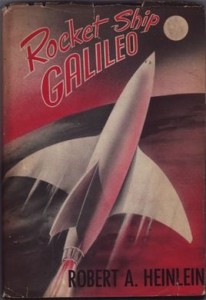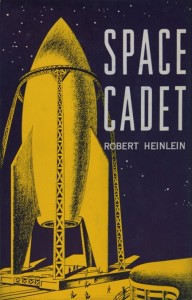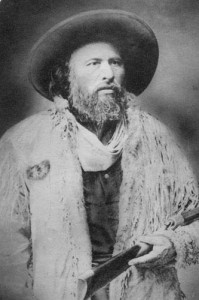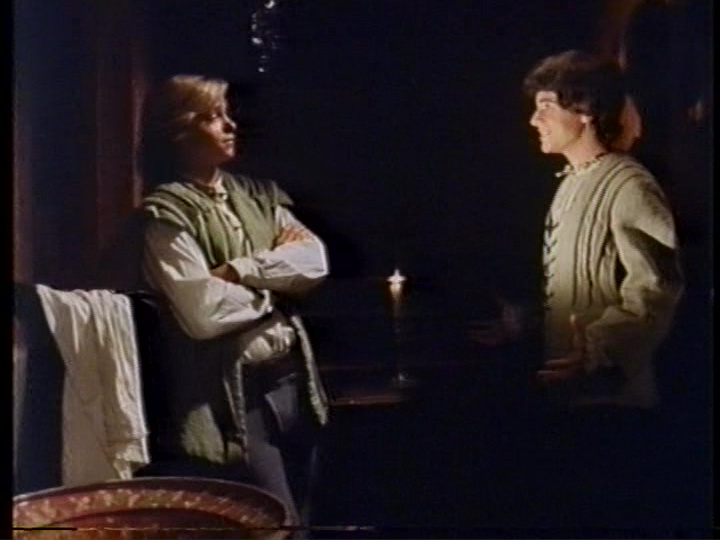
 This is an omnibus volume presenting Robert Heinlein’s first four “juvenile” novels, originally published by Scribner’s in 1947, 1948, 1949, and 1950. Heinlein wrote twelve science fiction novels for teenagers, and put more care and artistry into them than most writers put into serious adult fiction. Their impact has been astonishing, and they remain widely read long after their science and “futurity” has become outdated. They were tremendously liberating for young readers, especially when you judge them in the context of North American society when they were written. Unlike any author writing for young people, up to that time, Heinlein treated his readers with honesty and respect, as well as providing them with a rich intellectual feast. Heinlein struggled with his editors, who constantly panicked over the possible “unsuitability” of his treatment and subject matter. But they were devoured by libraries, and thus were available to people (like me) who were in no position to buy books. Scribner’s published them in a handsome format, with illustrations of great artistic merit by Clifford Geary. I came to them when they were starting to show their age, but their “sense of wonder” and their moral impact remained vivid. Citizen of the Galaxy, for example, was one of the three books that most stimulated my life-long fascination with the issue of freedom and slavery.
This is an omnibus volume presenting Robert Heinlein’s first four “juvenile” novels, originally published by Scribner’s in 1947, 1948, 1949, and 1950. Heinlein wrote twelve science fiction novels for teenagers, and put more care and artistry into them than most writers put into serious adult fiction. Their impact has been astonishing, and they remain widely read long after their science and “futurity” has become outdated. They were tremendously liberating for young readers, especially when you judge them in the context of North American society when they were written. Unlike any author writing for young people, up to that time, Heinlein treated his readers with honesty and respect, as well as providing them with a rich intellectual feast. Heinlein struggled with his editors, who constantly panicked over the possible “unsuitability” of his treatment and subject matter. But they were devoured by libraries, and thus were available to people (like me) who were in no position to buy books. Scribner’s published them in a handsome format, with illustrations of great artistic merit by Clifford Geary. I came to them when they were starting to show their age, but their “sense of wonder” and their moral impact remained vivid. Citizen of the Galaxy, for example, was one of the three books that most stimulated my life-long fascination with the issue of freedom and slavery.
Read more »
Category Archives: BN - Reading 2008 - Page 4
(Robert A. Heinlein) Four Frontiers
READING – JULY 2008
16317. [2] (Arthur Conan Doyle) A Scandal In Bohemia [story]
16318. (Charles Lamb) On the Tragedies of Shakespeare [article]
16319. (Andrew Curry) Raiders or Traders? [article]
16320. (Stephen Jay Schneider –ed.) 501 Movie Stars [article]
16321. (Will McLean) [blog A Commonplace Book] The 14th Century Social Pyramid [article] Read more »
16384. (Barbara Kingsolver, Steven L. Hopp & Camille Kingsolver) Animal, Vegetable, Miracle ― A Year of Food Life
Novelist Barbara Kingsolver and her family meditate on their efforts to feed themselves outside of what I call “corporate communism” — the globalized and collectivized system of agriculture that is rapidly destroying health, environment and freedom on this planet. Kingsolver doesn’t use my terminology, and confines herself to immediate issues of personal health, aesthetics, animal ethics, and local economic vitality. But the book is useful background for the kind of issues that interest me, as well as being entertainingly written. The book doesn’t have the sanctimonious tone that hampers much that is written on the subject. Kingsolver knows that real families have to make economic choices under the constraint of shrinking financial resources, and practical reality. She is a strong advocate of the “eat local / eat seasonal” movement, which lies at the crux of her strategy, and takes every occasion to point out that both economy and pleasure tend to be maximized by it.
Thursday, June 19, 2008 — Omlowen dha bos!
While I’ve been silenced by the demands of work, my friend Steve Muhlberger has become more voluble, with longer and more detailed blog entries, inspired by his European travels. These can be read at Muhlberger’s Early History. Among them are items on Latvia, Medieval robots, the enchanting Cornish landscape, the truth about the Cornish pastie, and a particularly fine one on the legacy of Cornish tin mines. The discussion of the distinctive pride of the miners reminded me of a medieval mining town of Kutná Hora I visited in Czech Republic. There, the gothic Church of St. Barbara (Chrám svaté Barbory) is decorated with wonderful frescoes that depict the daily life and work of miners and minters. The miners had considerable political and social power and independence, and expressed it in this extraordinary art. Read more »
READING – JUNE 2008
16271. (George Woodcock) Gabriel Dumont
16272. (Shashi Tharoor) The Elephant, the Tiger, and the Cell Phone ― Reflections on India,
. . . . . the Emerging 21st-Century Power
16273. (Richard van Emden) Boy Soldiers of the Great War Read more »
16305. (Giles Milton) White Gold ― The Extraordinary story of Thomas Pellew and North Africa’s One Million European Slaves
One of the more annoying bits of nonsense that crops up is the notion that there are forms of chattel slavery which are somehow benign. It is often claimed that “traditional” slavery in the Islamic world was somehow less of an abomination than the slavery in the American South or the Caribbean. Classical historians often promote a similar Gone With the Wind-ish interpretation of slavery in ancient Rome, always concentrating on the less numerous domestic servants while ignoring the millions who were worked to death in the mines, on plantations, or by the urban syndicates that owned the water-carriers.
Those who are inclined to accept this constantly resurfacing fantasy are encouraged to read this book. It’s an account of the life of Thomas Pellew, a Cornish child captured by slave-raiders in 1716. He became a slave of the Morocan sultan Moulay Ismail (whose descendant still rules Morocco today. In the 17th and 18th centuries, slave traders from the Moroccan port of Salé terrorized the Cornish coast, often raiding villages and seizing hundreds of men, women and children to sell in the lucrative slave markets of North Africa. It is estimated the roughly a million Europeans, Americans and Newfoundlanders were captured in this way, during that period. British monarchs dealt with these assaults with a combination of bluster, misdirection, double-dealing, self-interested hypocrisy, fake sabre-rattling, bribery, alliances with their own enemies, and overwhelming cowardice that was virtually identical to the Bush administration’s response to 9/11. Themselves active in a colossal slave trade, European Christian aristocrats and wealthy “entrepreneurs” were happy to collude with their Muslim counterparts.
In Thomas Pellew, who spent a great part of his life as a slave in a particularly good position to form an overall evaluation of slavery in North Africa, and who escaped to tell the tale, we have plenty of testimony to the brutality of slavery in North Africa. Even Pellew, who survived as a “privileged” personal slave, suffered unspeakable tortures, beginning at the age of eleven. The bulk of the captives were abused, tortured, and quickly worked to death in massive construction projects, or laboured in chains in the fields. There was no “benign” slavery, because there has never been any form of slavery that was benign, anywhere. Slavery is slavery, always filthy, evil and disgusting, at any time, in any place, in any culture.
Giles Milton’s book, taken largely from Pellew’s account, but well corroborated and researched, is well-written.
16271. (George Woodcock) Gabriel Dumont
 Gabriel Dumont’s role in the Northwest Rebellion of 1885 is well known to Métis Canadians, and many people in our three prairie provinces, but otherwise he is overshadowed by the more romantic figure of Louis Riel. Riel, after all, had religious visions, underwent martyrdom, and left a written legacy. His instability is the stuff that attracts attention, and he’s the one that’s been treated in novels, plays, movies, songs, and even an opera. But in many ways, Dumont is a more interesting man, and deserves more respect than the dubiously sane Riel. George Woodcock, in this short biography, emphasizes how much Dumont exemplified the most admirable aspects of Métis society. Read more »
Gabriel Dumont’s role in the Northwest Rebellion of 1885 is well known to Métis Canadians, and many people in our three prairie provinces, but otherwise he is overshadowed by the more romantic figure of Louis Riel. Riel, after all, had religious visions, underwent martyrdom, and left a written legacy. His instability is the stuff that attracts attention, and he’s the one that’s been treated in novels, plays, movies, songs, and even an opera. But in many ways, Dumont is a more interesting man, and deserves more respect than the dubiously sane Riel. George Woodcock, in this short biography, emphasizes how much Dumont exemplified the most admirable aspects of Métis society. Read more »
READING – MAY 2008
(Pierre Clastres) Recherches d’anthropologie politique:
. . . . 16178. (Pierre Clastres) Le dernier cercle [article]
. . . . 16179. (Pierre Clastres) Une ethnographie sauvage: A propos de Yanoama [article] Read more »
(Hunt 1982) The Mysterious Stranger; (Bridges 1984) Pudd’nhead Wilson
Back in the 1980’s, Nebraska Public Television undertook an ambitious project of filming Mark Twain’s less famous books and stories. These were low-budget affairs, but they had the merit of remaining faithful to Twain’s texts.
Puddin’head Wilson is difficult for an audience of today to assimilate. Few modern viewers understand the social complexities of slavery in pre-Civil War America. Twain’s novel was written in 1893, and set in the period 1630–1850. It turns on a “switched babies” plot device, with a slave and a free baby living out the consequences. The laws of slavery permitted someone who was 1/32 black to be enslaved, so this is perfectly credible. Few now realize that many slaves were in this category. Twain’s bitter satire examines, in turn, all the pretensions, contradictions, and hypocrisies of a slave-holding society. Only one character, Puddin’head Wilson, comes off favourably. He is the only one who seems to care about truth, and not to be driven by greed, revenge, or pretension. Naturally, he is dismissed by all as a “pudd’nhead”, a fool. The low-budget TV film was reasonably well-crafted, and boasted a fine performance by Lise Hilbodt.
But most intriguing is The Mysterious Stranger. This bizarre story did not exist in any definitive edition until 1982. Twain worked on it for twenty years, producing three extremely different versions, all of which remained unpublished. His literary executor, Albert Bigelow Paine, issued a composite version in 1916. The film sticks closest to this version, with some elements of the others. It’s set in Renaissance Austria, where a strange youth, calling himself “No. 44, New Series 864962” appears amidst the apprentices of a printing firm. His ability to perform sundry miracles, and to travel anywhere in time and space, are revealed to one of the apprentices. The film version hints at Twain’s pessimistic world-view, which some have described as “existentialist”, though this unduly trivializes it. Twain struggled all his life to reconcile conflicting attitudes about himself and humanity, and no story of his shows it more than this one. This film version retains enough of the metaphysical spookiness and religious skepticism to ensure that it would come as something of a shock to any American public school or “family” audience that saw it. The public is used to denatured, candified film versions of Twain. Actually, it had more success in Europe, where it was filmed, than in America. The young television actor, Lance Kerwin, gave a surprisingly subtle performance as No.44, though for some reason, he was not given the star billing — probably because the character played by Canadian child star Chris Makepeace is technically the protagonist. Also, Kerwin had been was mainly a television actor, while Makepeace had scored success in film with Meatballs (1979) and My Bodyguard (1980).
Wednesday, May 14, 2008 — Steven Muhlberger on Canadian Historians; Romeo Dallaire
Two interesting items over at Muhlberger’s Early History. One discusses the peculiar psychology of Canadian historians who can’t quite make themselves believe that Canadian history is worthy of being discussed in a world context, and, react to the thought with the titters of Victorian spinsters spotting a naked bottom. [ The French Revolution and Canada — laughable?] .Then he discusses Senator Romeo Dallaire’s comments. blasting our government for its hypocritical and immoral policy regarding Omar Khadar, the Canadian child soldier long held at Gitmo against all standards of law and decency. [Rule of law and human rights — only when convenie…] Spot on. I, too, looked on with disgust as our morally puny Secretary of State, Jason Kenney (Conservative) gave a fatuous lecture on the nature of evil — to a man whose personal knowledge of genocide, and whose ethical credentials stand as far above him as the Hubble Telescope stands above an ant on the shore of the Dead Sea. When Mr. Kenney spouted the predictable “the end justifies the means” claptrap beloved by scoundrels, Dallaire looked him straight in the eye and said: “If you want a black and white, and I’m only too prepared to give it to you, absolutely. You’re either with the law or now with the law. You’re either guilty or you’re not.”
